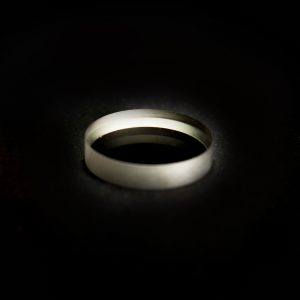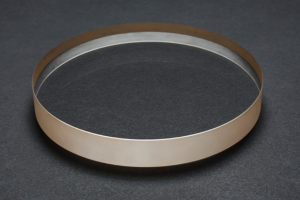Let’s analyze the refractive properties of light:
The light passing through the optical lens will refract or deviate from the front and rear surfaces of the lens. The deviation amplitude of the light is determined by the refractive index of the material and the incidence angle of the incident light on the lens surface.
1. Refractive index
The refractive index of a transparent medium is the ratio of the velocity c of light rays in vacuum to the velocity v in the medium, n=c/v. The ratio has no units and is always greater than 1.
The refractive index reflects the refractive capacity of the medium. The higher the refractive index, the more the beam from the air entering the medium deviates. The deviation or refraction from air to transparent medium with refractive index n can be calculated according to Snell Descartes law, as follows:
The refraction ray, the incident ray and the normal are in the same plane, and the incidence angle i and the refraction angle r are respectively composed of the normal, the incident ray and the refraction ray. Calculation formula: sin i=n sin r.
Since the speed of light of transparent media varies with the wavelength, the refractive index value is always expressed with reference to a specific wavelength: the reference wavelength is 546.07nm (mercury green spectral line) for e-line, but 587.56nm (helium yellow spectral line) for d-line in the United States and other countries. However, this difference has no actual impact, because it is only reflected in the third decimal place of the refractive index value.
At present, the refractive index of lens materials used in the market ranges from 1.5-1.9.
2. Dispersion coefficient Abbe number
The change of refractive index caused by light wave will cause white light to have dispersion according to different refraction. In fact, the shorter the wavelength, the higher the refractive index, and the refraction of visible light extends from the red region to the blue region of the spectrum. The dispersion ability of the material can be described by Abbe number. Abbe number is inversely proportional to the dispersion force of the material. The specified range of lens material is usually 30-60. The larger the value, the less the dispersion. In general, the higher the refractive index, the greater the dispersion force, and the lower the Abbe number. Although all lenses have dispersion, this factor can be ignored in the center of the lens. Only in the periphery of the lens made of highly dispersive materials can the dispersion phenomenon be easily detected. In this case, the dispersion phenomenon shows that the edge of the off-axis object has color stripes.



